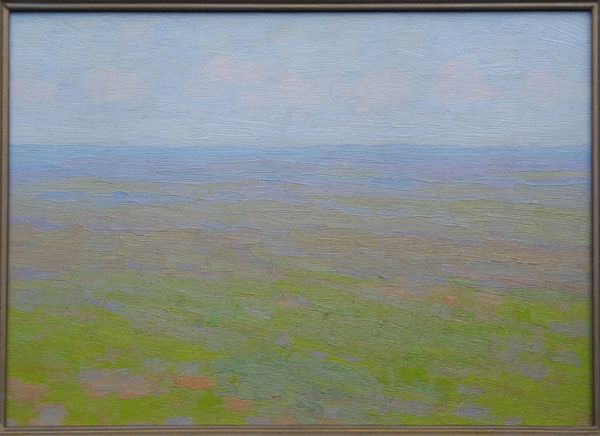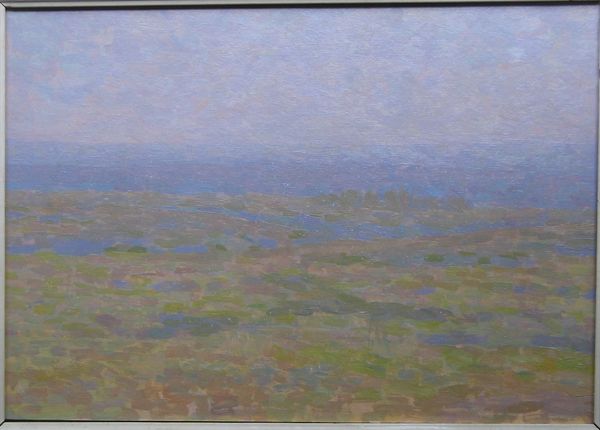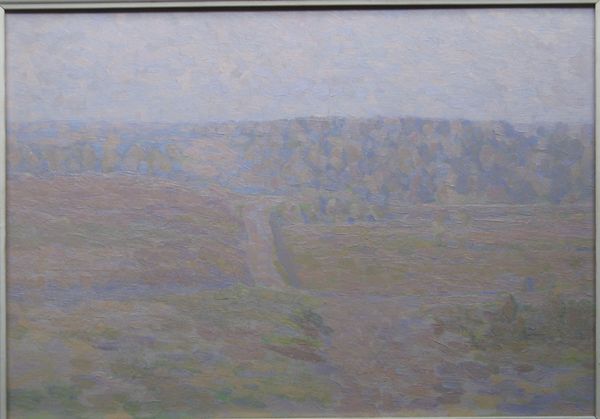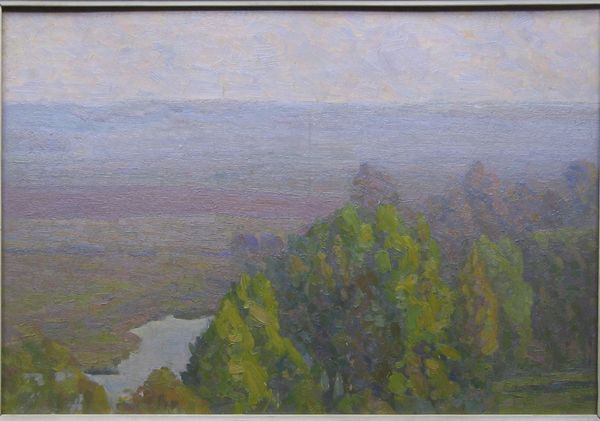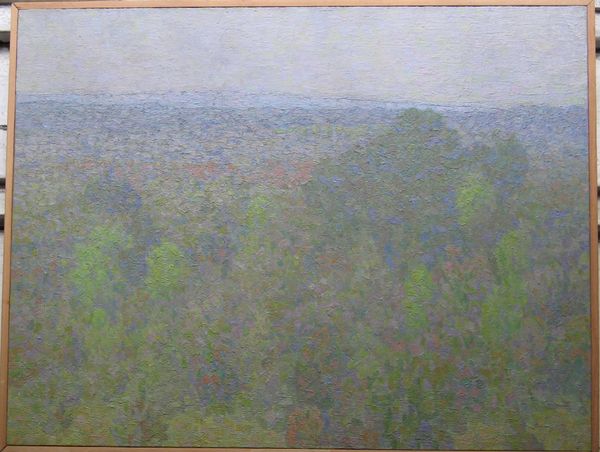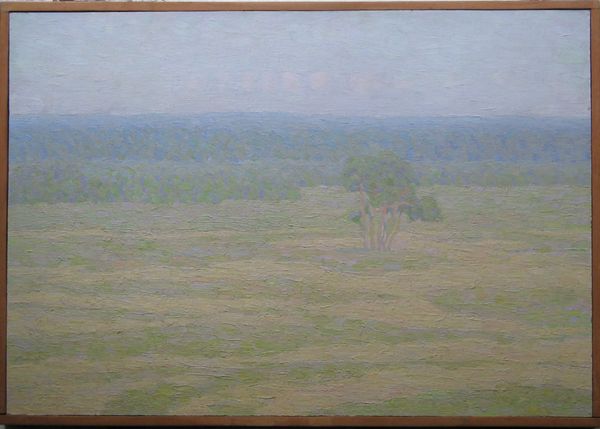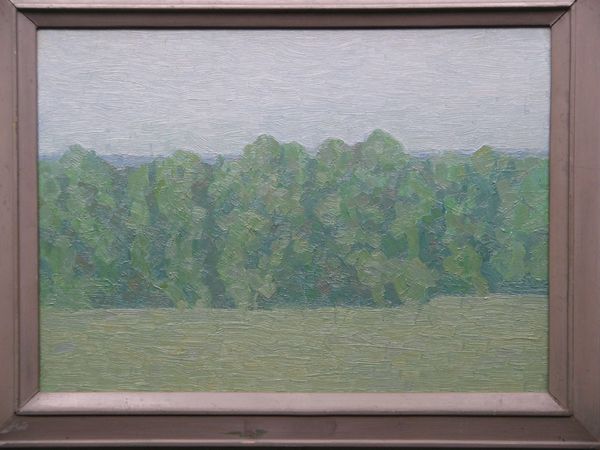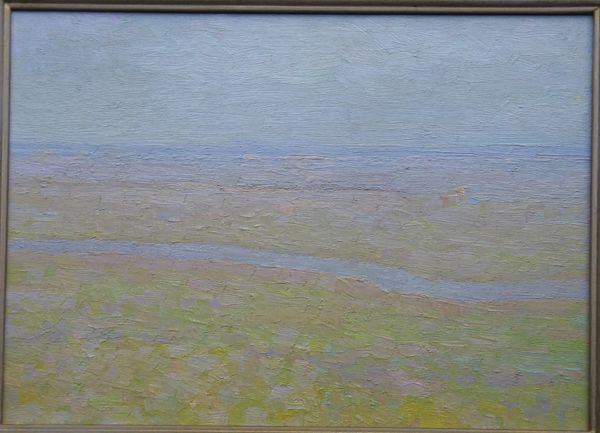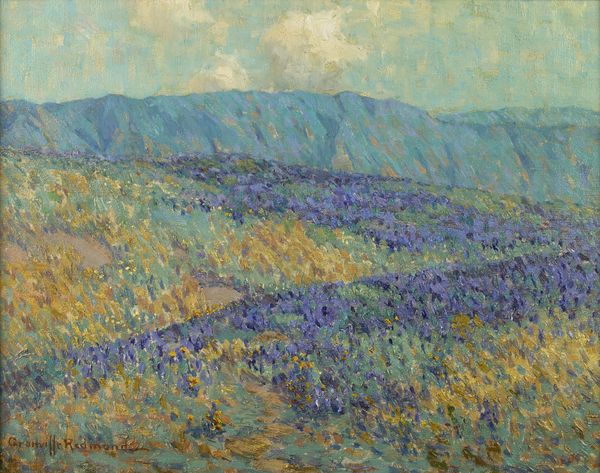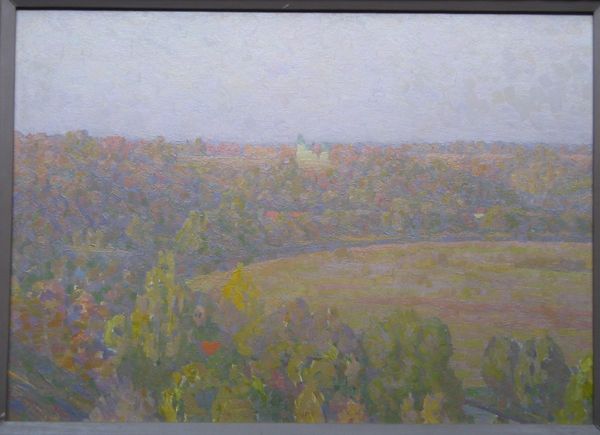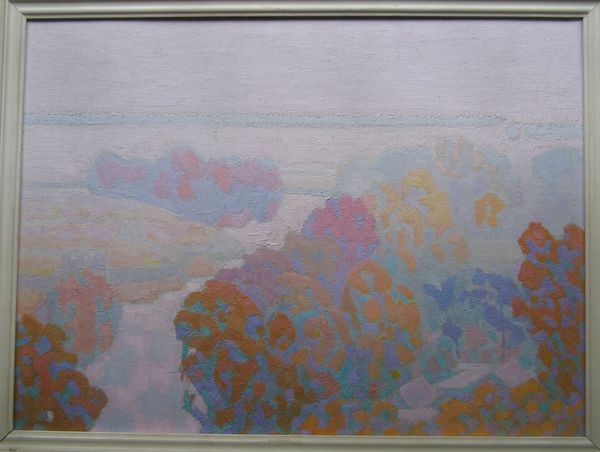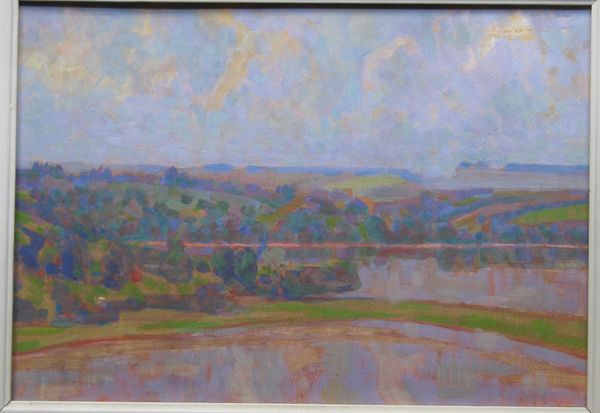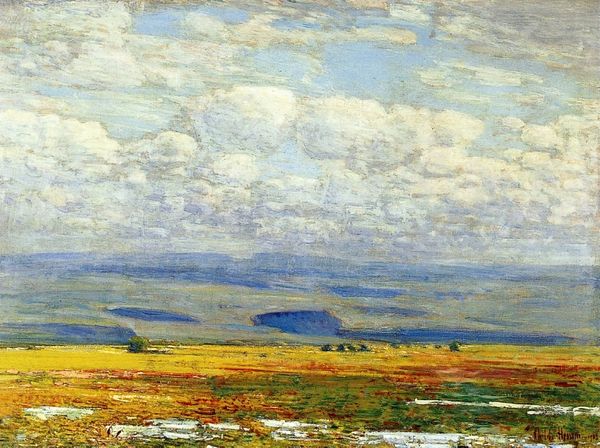
Copyright: Hryhorii Havrylenko,Fair Use
Editor: This is "Landscape (from the Triptych)" painted in 1971 by Hryhorii Havrylenko, held at the National Art Museum of Ukraine. It's a captivating scene, almost dreamlike with its soft colours and hazy horizon. What do you see in this work? Curator: Well, first I'm struck by the emotional weight embedded in the Ukrainian landscape itself. For centuries, it’s been more than just scenery; it is tied to cultural memory, to ideas of nationhood and belonging. The artist renders a landscape through memory rather than direct observation. Do you sense the psychological impact? Editor: I can see that. It feels vast and calming but also slightly melancholic, perhaps. It feels almost timeless, which makes me think of enduring traditions. Curator: Exactly! The use of colour also communicates meaning. Green often represents hope, growth, and harmony, but the muted tones could symbolize a longing for peace, or perhaps hidden resilience. Consider how colour-field painting influenced this artist: fields of colour often suggest spiritual or emotional states. The horizon might represent an unobtainable longing or promise. Editor: That makes so much sense. The blending of the sky and land gives it an almost infinite feel. The subtle colours carry so much emotional depth, like memories fading but not gone. Curator: Indeed. And what appears simple reveals itself as a profound reflection on landscape as cultural, psychological, and historical terrain. What we read is what lingers through our shared histories. Editor: This definitely gives me a new perspective on landscape art, appreciating how history and memory shape what we see. Curator: It's the quiet echoes within these images that tell us the most, isn't it?
Comments
No comments
Be the first to comment and join the conversation on the ultimate creative platform.
